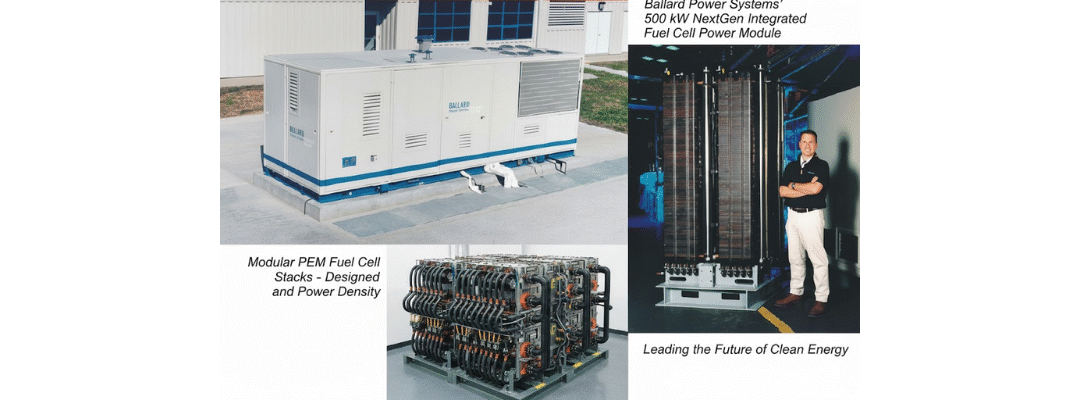Fuel cells, thanks to their modular nature, span a broad spectrum of use‑cases—from large stationary power plants down to portable power packs.
Stationary Power Plants
Fuel cell systems are increasingly employed for stationary electricity generation, backup power and combined heat & power (CHP) configurations. One review notes: “Fuel cell technologies … are worldwide recognized as the best options to decarbonise the stationary power production sectors including primary power generation units, backup power systems, and combined‑heat‑and‑power configurations (CHP
Typical system sizes range from a few kW in micro‑generation to multiple MW in larger installations.
In India, this application is gaining ground: with national focus on green hydrogen, organisations are deploying PEM fuel cell systems for decentralized power and telecom backup. You already mention this context.
These systems benefit from high operating efficiency, low emissions, and the ability to use waste heat (making CHP possible).
Submarines & Marine / Specialised Applications
Fuel cells are attractive in low‑noise, low‑signature environments like submarines. Your content mentions an 80 kW unit built for a German submarine manufacturer — this aligns well with documented special‑purpose application areas of fuel cells (though fewer public citations).
In general, the characteristics of fuel cells (silent operation, fewer moving parts) make them suitable for niche, high‑reliability applications.
Buses & Public Transport
Fuel‑cell buses represent one of the more mature transport applications. India, for instance, has launched its first hydrogen fuel‑cell buses in Ladakh under the National Green Hydrogen Mission.
Moreover, India has begun hydrogen‑bus/truck trials across key corridors and refuelling infrastructure is under development
The advantages you listed — space for tanks, central refuelling, trained maintenance — are well aligned with industry observations.
Cars & Passenger Vehicles
This remains a high‑potential but challenging segment. Automakers globally are engaged in fuel cell vehicle development, though infrastructure, cost and complexity remain significant barriers. Reviews of fuel cell applications validate this statement.
In India, you mention upcoming vehicles like the Toyota Mirai and the Hyundai Nexo with ~650 km range — this ties in nicely with the global direction.
Portable Power Systems
Fuel cells are increasingly used for mobile or remote power needs (e.g., up to ~1.2 kW systems) and can act as alternatives to batteries or diesel generators. A review identifies portable generation among the sectors for fuel cell deployment.
Summary of Key Application Categories
| Application Area | Typical Scale | Key Benefits & Notes |
| Stationary Power Plants | kW to MW scale | High efficiency, CHP potential, remote/off‑grid use |
| Submarines/Special Use | Tens to hundreds kW | Silent, low‑signature, niche but strategic |
| Buses/Public Transport | 100s kW per vehicle | Established pilots, centralised fuelling infrastructure |
| Cars / Passenger Vehicles | Single vehicle scale | High range potential, infrastructure & cost challenges |
| Portable Power Systems | Watts to kW scale | Mobile/off‑grid use, battery‑alternative |

